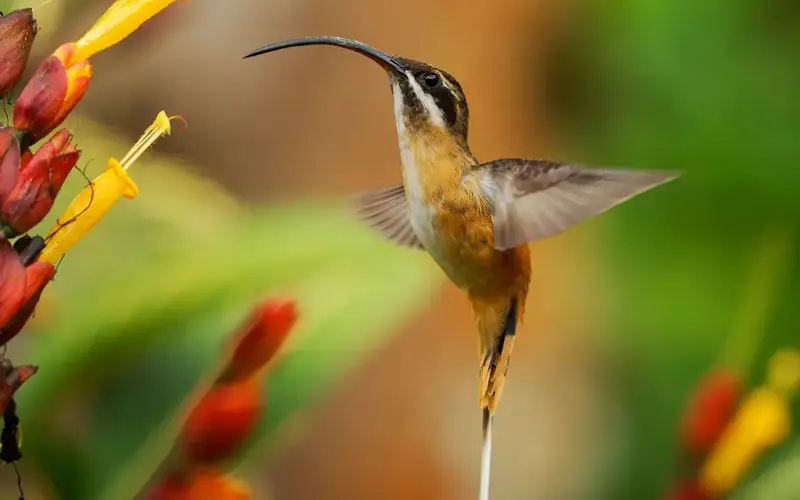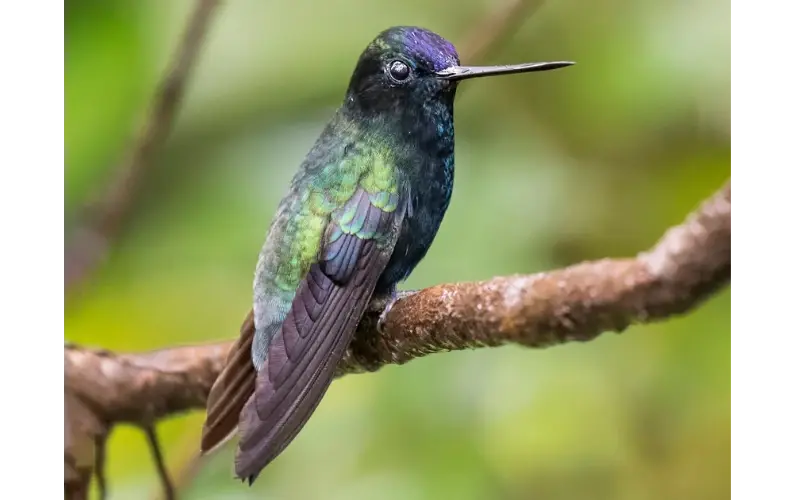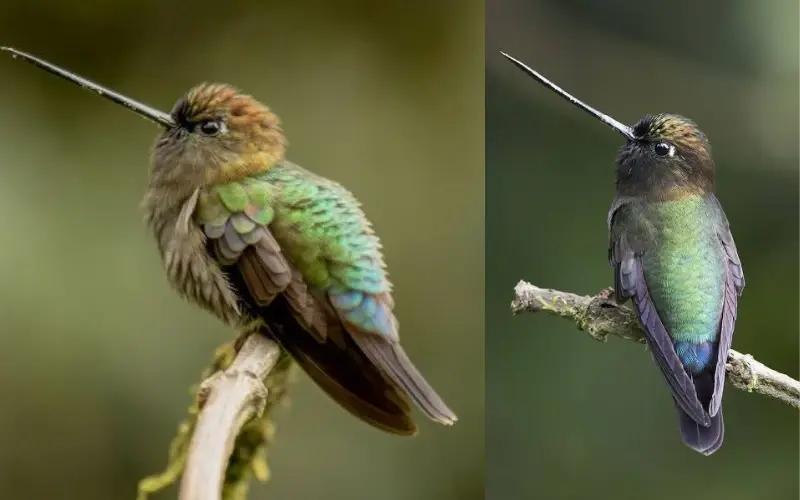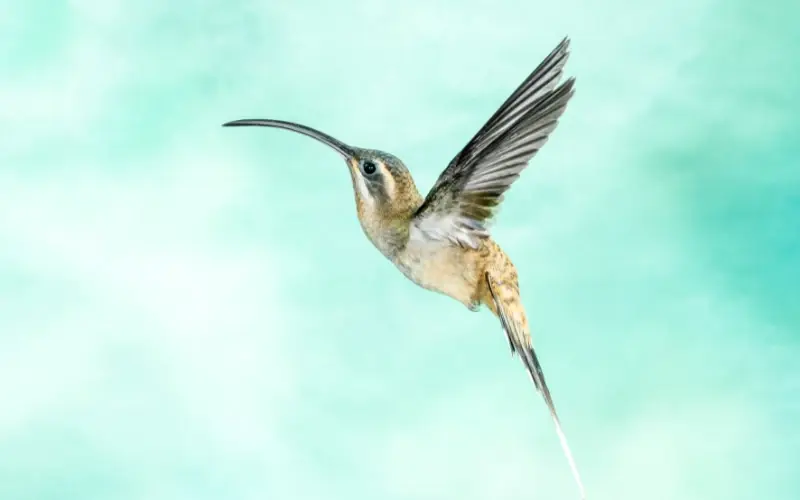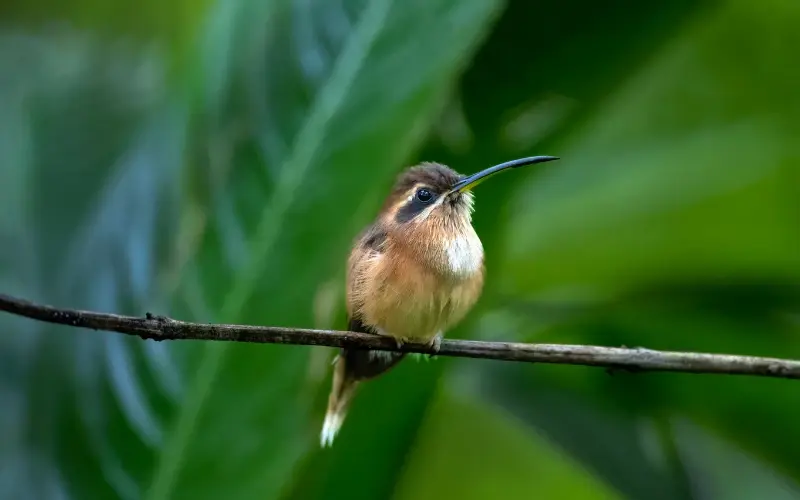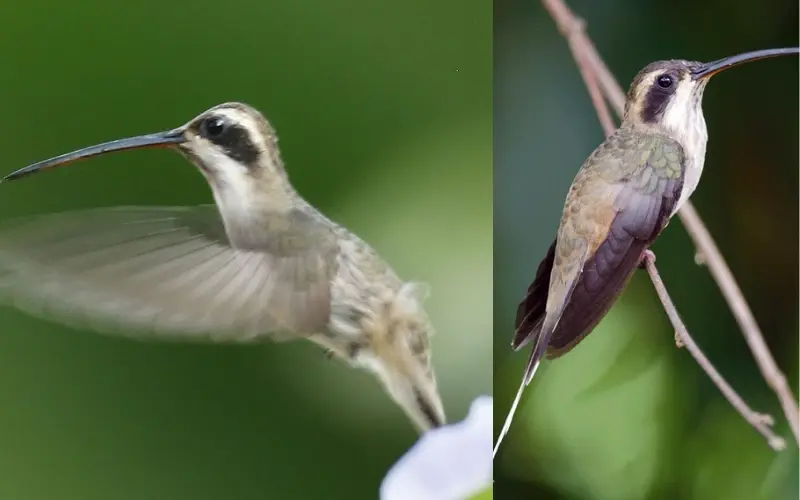The black-throated hermit measures 13-14 cm in length and weighs 5-7 grams. As its name suggests, the adult male has a black throat that contrasts perfectly with its gray underparts. The upperparts are bronze-green, while the short tail is chestnut with white tips to the outer tail feathers. The bill of the black-throated hermit is long, curved, and black.
A small hummingbird Varieties with a long white pointed tail. Its underparts, greenback, and striped face are typical features of many hermits, but the deep throat and white vent help distinguish it from other similar species. Live in the lowlands east of the Andes and under the rain forest in the adjacent foothills. It is difficult to see well as it lies in the gloom among the flowers. Sometimes a low voice gives way to a loud, screaming song.
The female does not have a black throat like the male and her upperparts are more greyish brown. Immature birds resemble adult females but have underparts and spotted throats. In both sexes, the legs and feet are flesh-colored.
Also Read: Bronzy hermit
Food and feeding
Like other hummingbird varieties, black-throated hermits feed on nectar taken from a variety of colorful tubular flowers. It uses its distinctive long bill to access nectar from flowers with corollas that the much darker short-billed hummer can feed on. Some favorite sources of nectar are Heliconia, Custus, epiphytic Araceae Gesneriaceae, and Anga flowers.
Breeding and nesting
The black-throated hermit’s breeding season coincides with the rainy season, which varies within its range. In Costa Rica and Panama, breeding occurs between May and August. Farther south in South America, the time changes later to September-December.
During the courtship display, the male hovers in front of the female before flying up and then rapidly diving down in a U-shape. If accepted, the woman will sit down and allow intercourse. The female alone builds a small cup nest, which is placed one to three meters above the ground on a low horizontal branch or tree fork.
The nest is made of soft plant fibers, lichens, and moss tied together by spider webs. It is decorated externally with pieces of bark, lichen, and moss. The female lays two small white eggs. She incubates the eggs alone for 15 to 19 days until they hatch. Eggs hatch approximately 20-26 days after hatching.
Also Read: Hook-billed hermit
Cool Facts of Black-throated hermit
1. The IUCN Red List now has the black-throated hermit classified as Least Concern.
2. Its total population is estimated to be between 500,000-5 million. The species has a wide distribution and is commonly described throughout its wide range in Central and South America.
3. One of the main threats to the black-throated hermit is habitat loss.
Due to mining, logging, and agricultural practices, deforestation has decreased its ideal density,
4. undisturbed forest habitat throughout much of its range. Climate change may also affect hummingbird-pollinated plants that the species relies on for food.
5. the black-throated hermit’s ability to survive and breed in partially open areas such as orchards and other high-growth forests makes it superior to some other hummingbird species.


